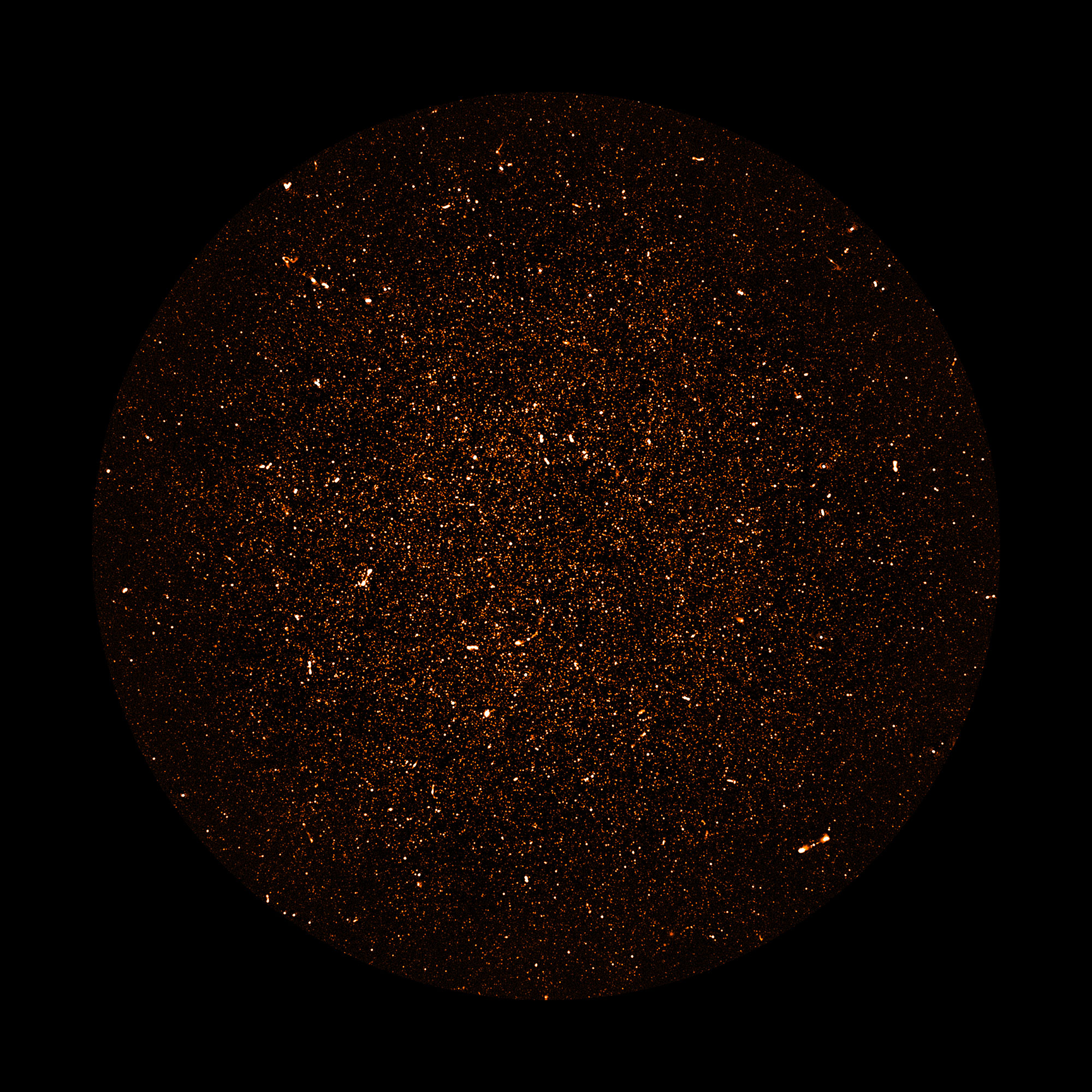Every bright spot in this new image is a distant galaxy

Astronomers just made the first radio observations of some of the most distant galaxies in the universe, some of which had never been detected before. The new findings, due to be published in the Astrophysical Journal, were used to create this stunning new image of the night sky.
How they did it: The image was created using the South African Radio Astronomy Observatory’s MeerKAT telescope, a radio telescope comprising 64 dishes in the Northern Cape of South Africa. MeerKAT has only been operational for a few years now but has made a few brilliant breakthroughs in its short life, including acquiring a detailed look at the aftermath of energetic explosions that occurred at the center of the Milky Way. Radio telescopes are effective at studying very distant objects since they can peer through gas and dust that obscure optical observations. Scientists use software to convert the wavelengths in radio data into a visual equivalent that shows off color and brightness.
The new image: The researchers behind the new study used MeerKAT to observe a region of the southern sky about the size of five full moons, for a total of 130 hours. In the new image (nicknamed DEEP2), each of the thousands of bright lights represents a galaxy. The brightest are galaxies whose luminosities are supercharged by the fierce gravitational friction and energy being emitted by the debris encircling a very powerful supermassive black hole.
Meanwhile, the fainter dots are distant galaxies similar to the Milky Way. This is the first time we've seen many of these galaxies, some of which are billions of light-years away.
So what? Apart from looking great, these types of images often illuminate more secrets about the cosmological history of the universe. The new results suggest that star formation rates during the so-called cosmic noon (the period of the universe after the Big Bang when star formation peaked, about 8 to 11 billion years ago) were actually higher than previously thought.
Deep Dive
Space
How to safely watch and photograph the total solar eclipse
The solar eclipse this Monday, April 8, will be visible to millions. Here’s how to make the most of your experience.
How scientists are using quantum squeezing to push the limits of their sensors
Fuzziness may rule the quantum realm, but it can be manipulated to our advantage.
The great commercial takeover of low Earth orbit
Axiom Space and other companies are betting they can build private structures to replace the International Space Station.
Stay connected
Get the latest updates from
MIT Technology Review
Discover special offers, top stories, upcoming events, and more.